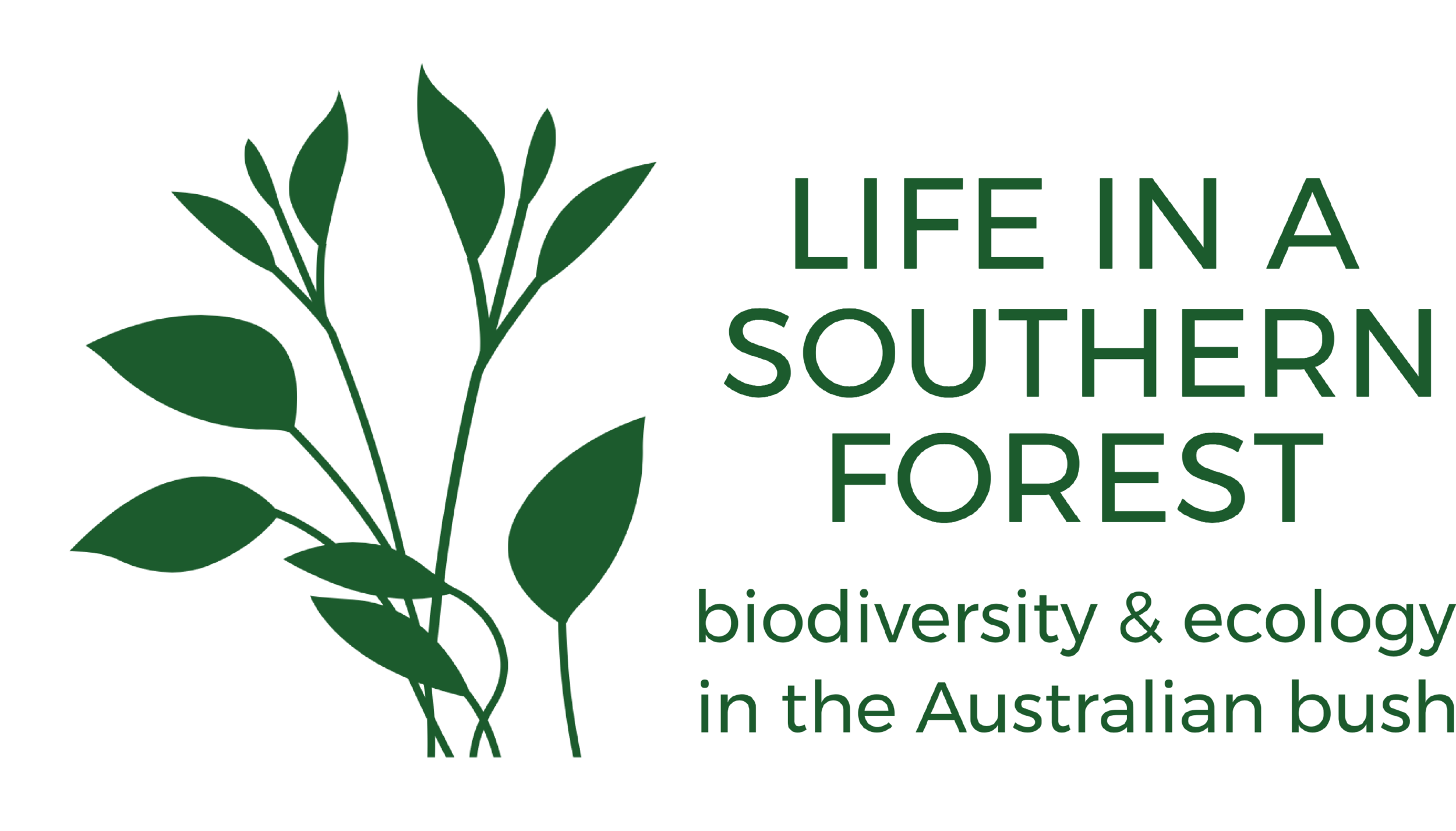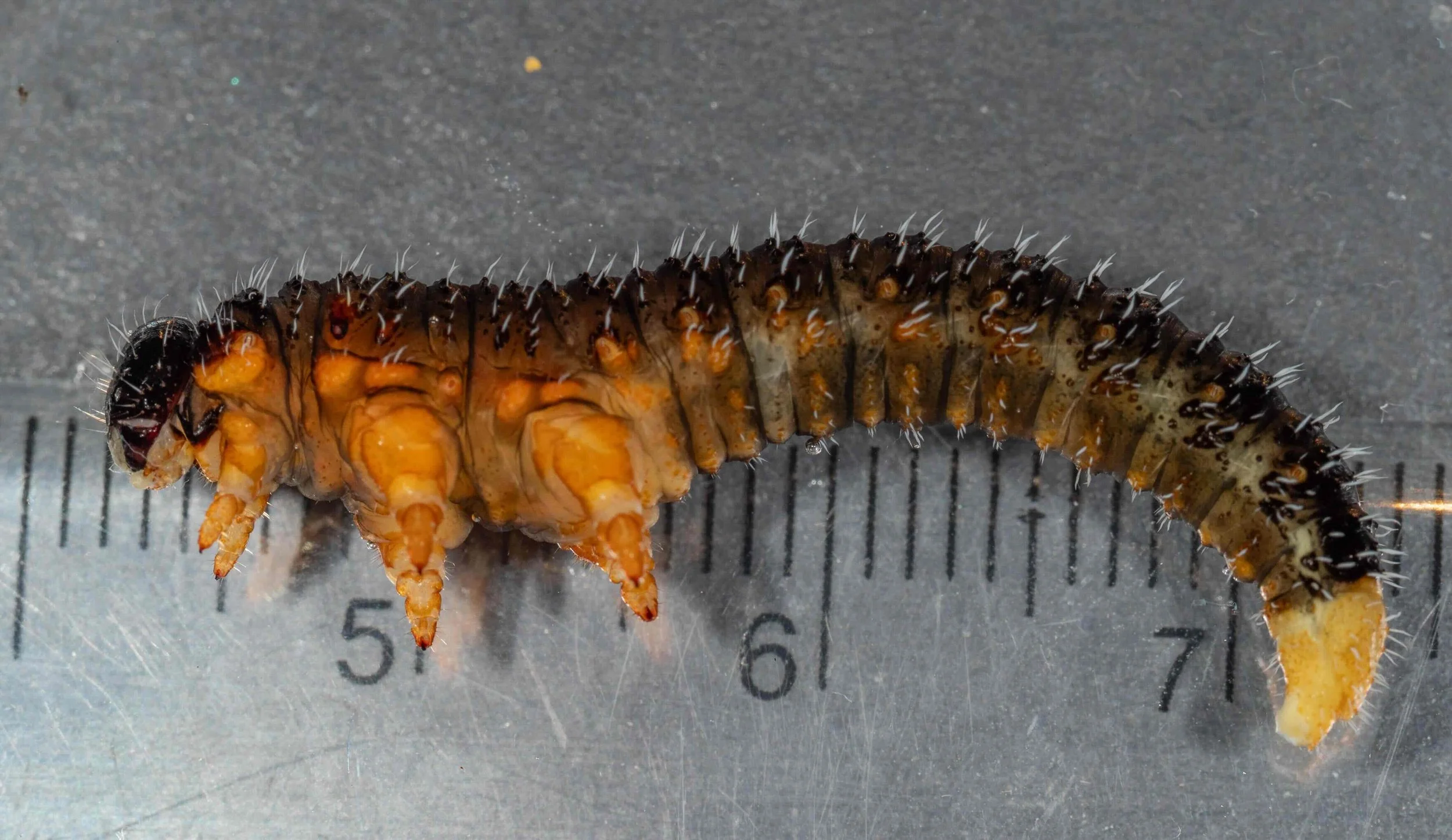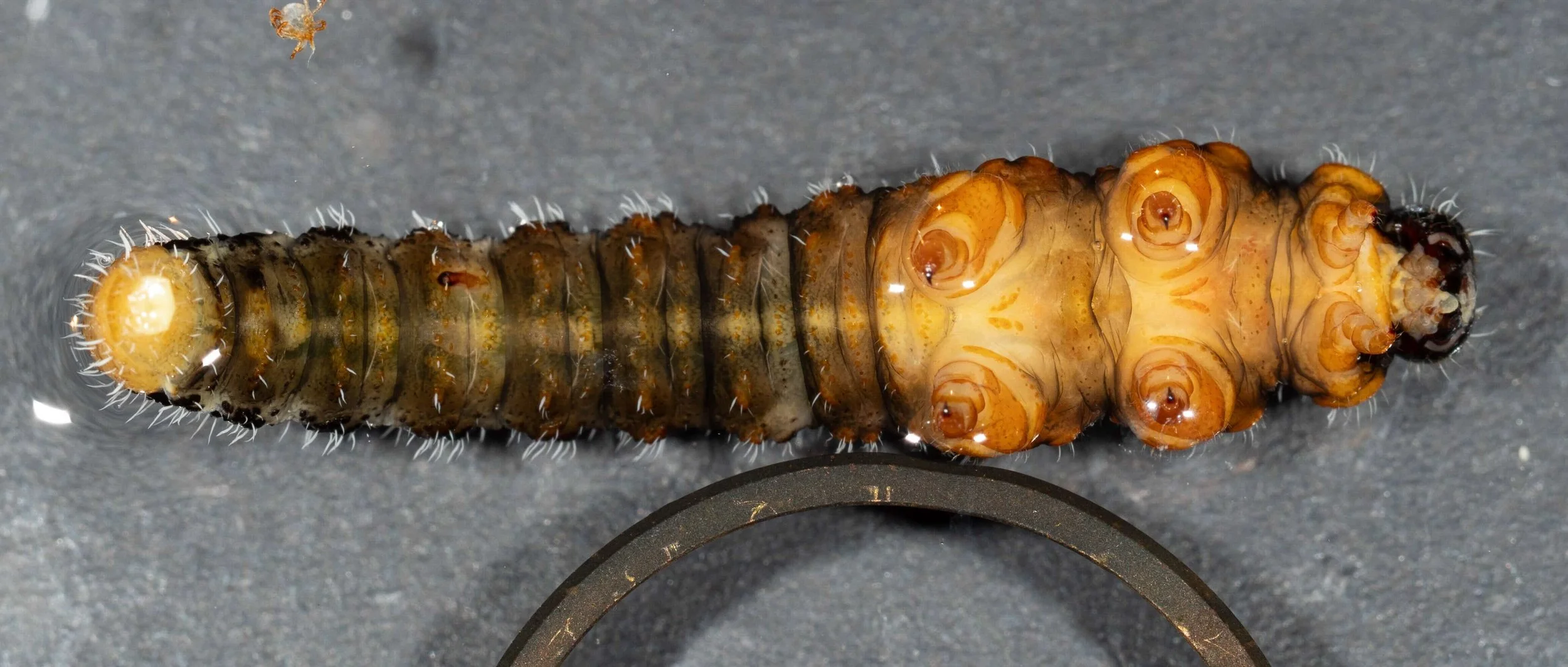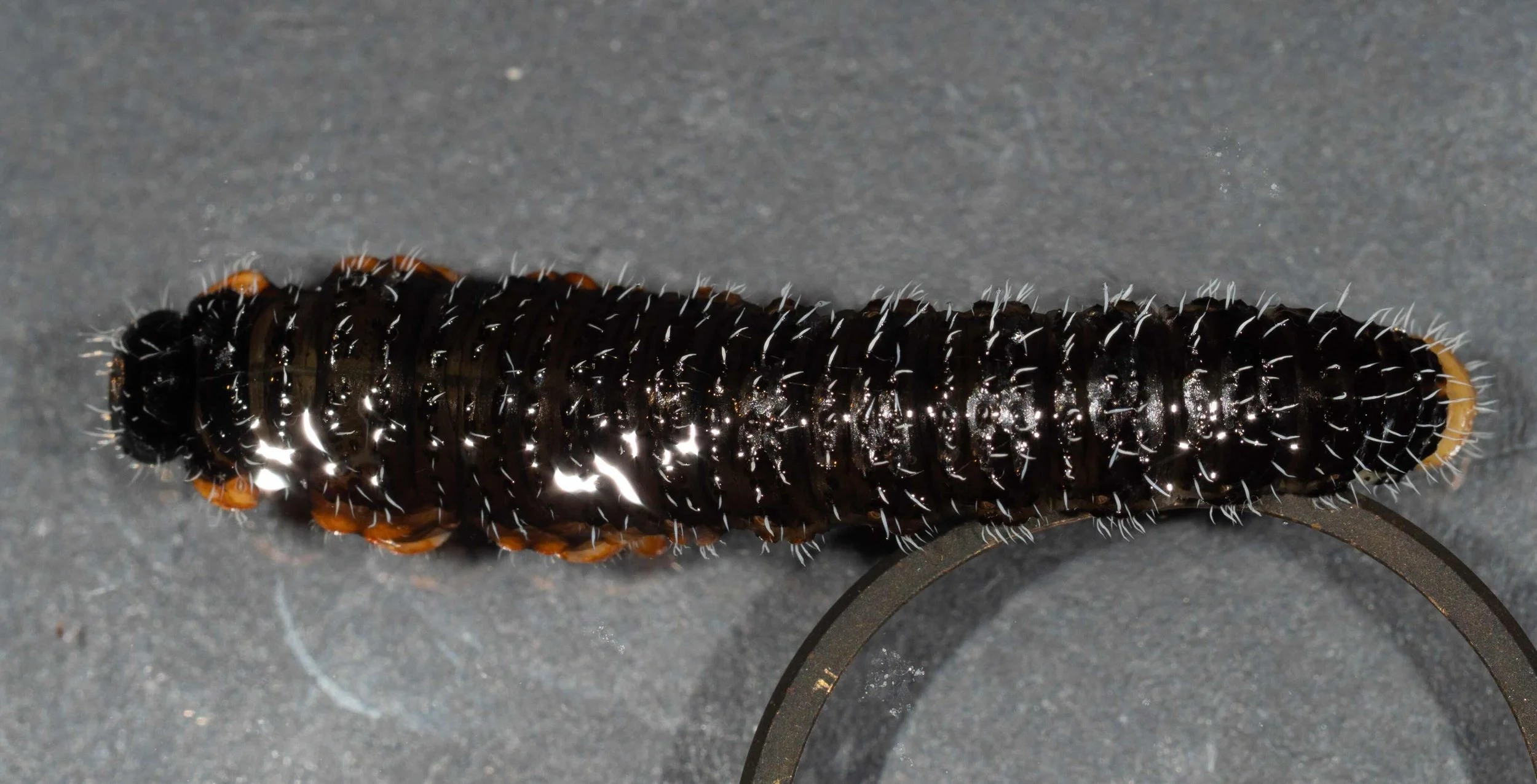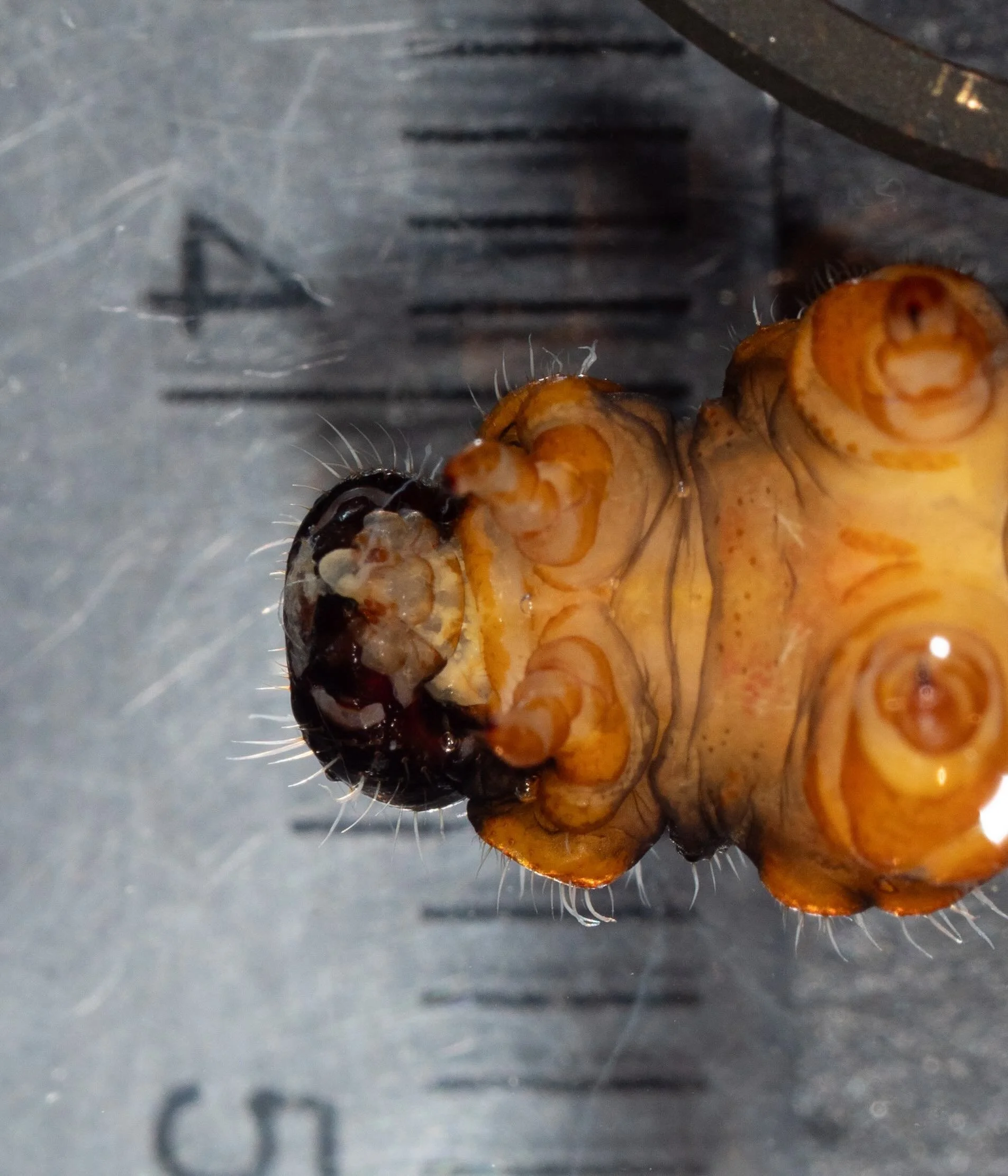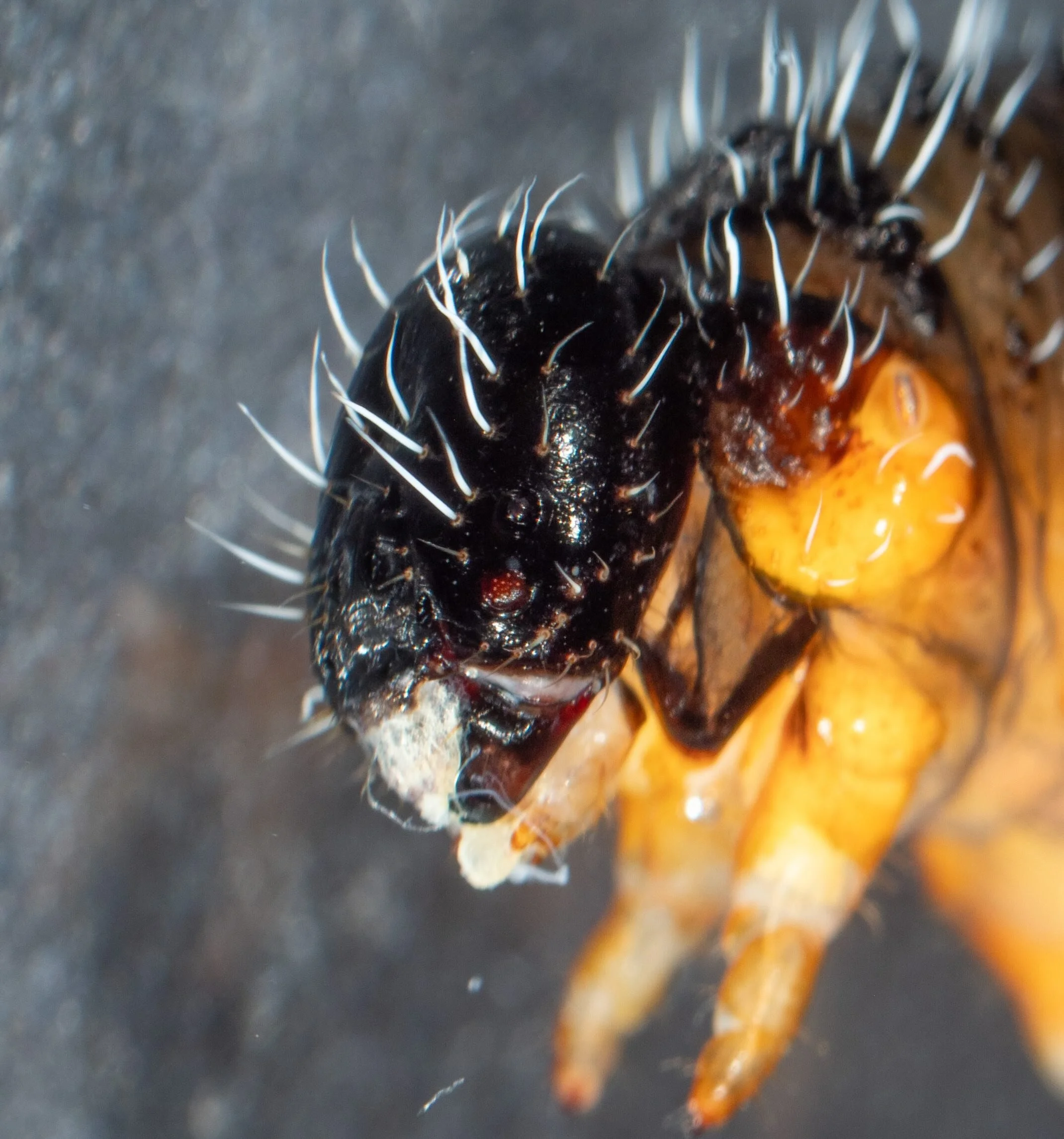Perginae larvae batch 3
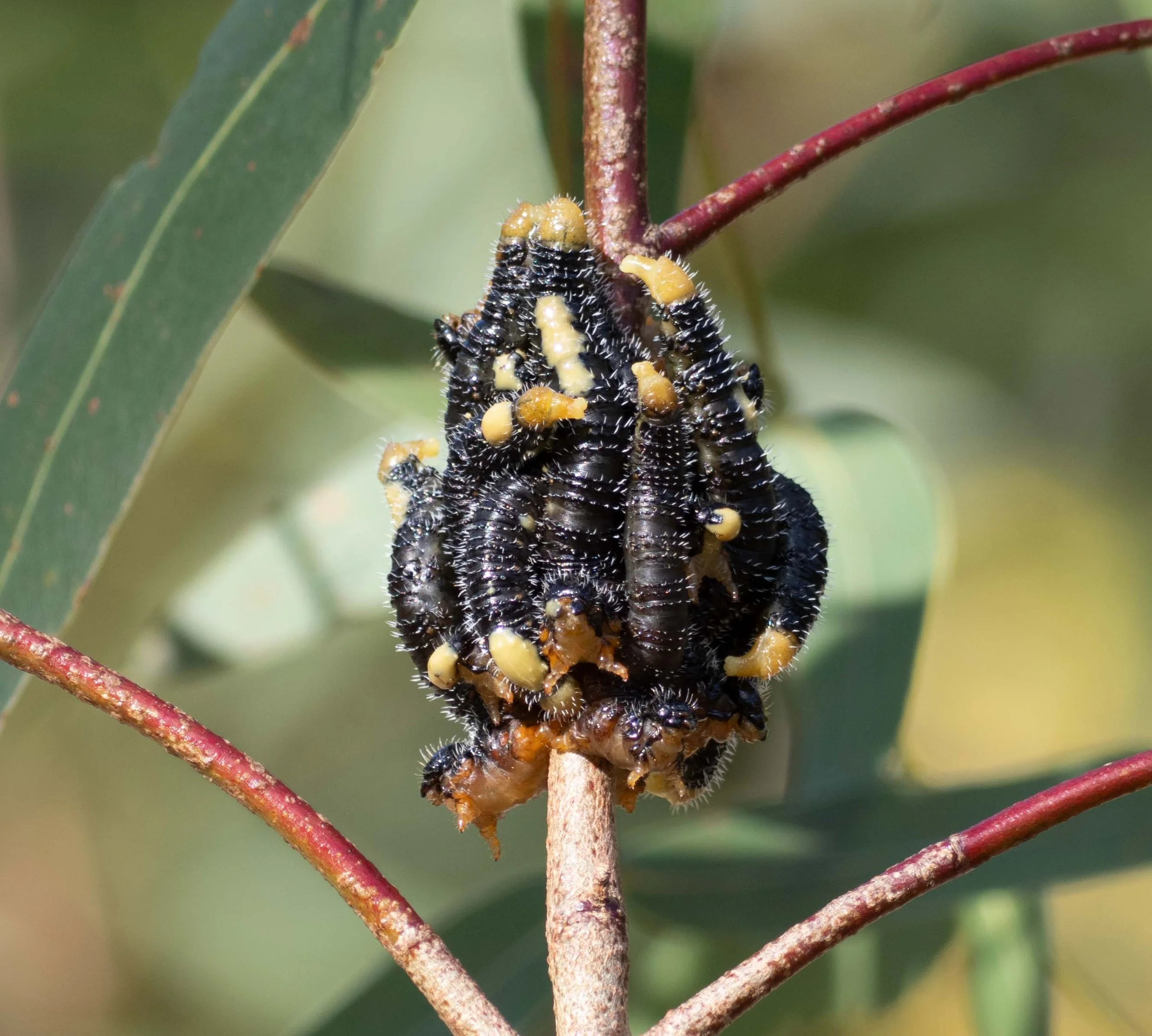
Workbook
This is the third collection of Perginae larvae I am aiming to rear through to the adult stage.
My goal is to obtain female Perga dorsalis adults for COI barcoding in order to determine whether Perga dorsalis and Perga affinis individuals identified morphologically have different barcodes.
Collection of larvae on Wonboyn Rd corner - 14th September 2025
On 14th September, we found Perginae larvae in a coppiced eucalypt growing at the Wonboyn Rd bend, in front of our neighbour’s gate. One cluster was on the trunk, the other on a branch. We collected the latter cluster of 15 larvae - iNaturalist observation here - and brought them inside to rear.
One larva was removed from that cluster for a voucher specimen. The living larva is shown below.
Larva after fixation in 80% ethanol shown below - voucher specimen #PW048
on 16th September in culture
20th September
During the day the larvae were far more spread out than usual on the foliage.
By 4pm several individuals were venturing out singly wandering around vegetation
5:20pm all were fully dispersed, some in ones or twos, others were feeding on a leaf in a cluster
5:40pm cluster had broken up and larvae were moving
10:30pm all larvae had left leaves and were in the leaf litter at the bottom of the tank
We decided to collect the remaining larvae in their home tree. They were in several clusters on leaves in the top 50cm or so of the tree. These were removed with the leaves on which they were feeding and transferred to the Batch 3 tank. We collected all larvae we could find at the top of the tree (at least 30 larvae).
Larvae in batch 3 cage were scattered in the leaf litter at the bottom of the cage. New larvae on their leaves were placed on the vegetation in the cage.
21st September
The new larvae were restless, gathered in two clusters on separate twigs. There was movement between the two clusters across the ground. One cluster has moved further up the twig.
One of the new larvae was removed for a voucher specimen #PW050 - images below
The original larvae could be heard making scratching sounds in the leaf litter at the bottom of the cage.
This is a workbook page … a part of our website where we record the observations and references used in making species identifications. The notes will not necessarily be complete. They are a record for our own use, but we are happy to share this information with others.
